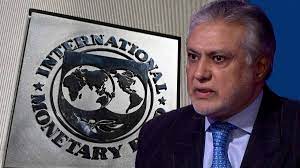WEB DESK
As districts in Pakistan continue to be affected by massive monsoon rainfall and unprecedented levels of flooding, the World Health Organization (WHO) warns of significant public health threats facing affected populations, including the risk of further spread of water- and vector-borne diseases such as malaria and dengue fever.
The impact of the heavy monsoon rains, which began in mid-July 2022, is drastic, affecting 33 million people in 116 districts across the country, with 66 districts being hardest hit.
According to the Ministry of National Health Services, Regulations and Coordination, at least 1000 people have been killed and 1500 injured as a result of this natural disaster, and more than 161 000 people have been displaced to relief camps.
Around 888 health facilities have been damaged in the country, of which 180 are completely damaged, leaving millions of people lacking access to health care and medical treatment, as reported in many affected districts.
“According to a preliminary assessment conducted by WHO and humanitarian partners, the current level of devastation is much more severe than that caused by floods in Pakistan in previous years, including those that devastated the country in 2010,” said Dr Ahmed Al-Mandhari, WHO’s Regional Director for the Eastern Mediterranean. “WHO has initiated an immediate response to treat the injured, provide life-saving supplies to health facilities, support mobile health teams, and prevent the spread of infectious diseases.”
Ongoing disease outbreaks in Pakistan, including acute watery diarrhoea, dengue fever, malaria, polio, and COVID-19 are being further aggravated, particularly in camps and where water and sanitation facilities have been damaged. Even before the heavy rainfall and subsequent flooding, Pakistan had reported 4531 measles cases, and 15 cases of wild poliovirus in 2022. The rains and floods have disrupted the nationwide polio vaccination campaign in affected areas.















































